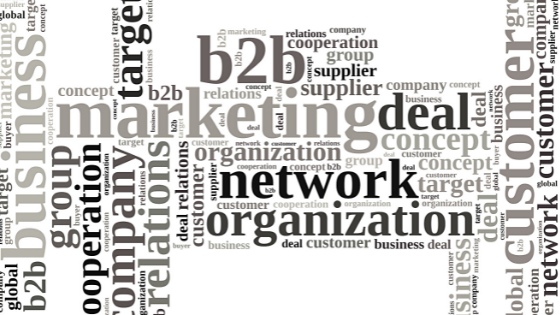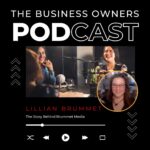No doubt, the digitalisation of our world brought about a B2B marketing tectonic shift.

What led to this shift?
- Millennials that now make up nearly half of all B2B buyers prefer to shop online.
- B2B buyers are educated consumers spending more time considering their options, reading reviews, and conducting in-depth online research.
- There is no specific “type” of B2B buyer, there are buying groups. So, it is important to appeal to varied levels of attention. Products/services need to capture different types of people and then incite the “purchase” action.
- Today’s B2B buyers don’t jump the gun and purchase immediately: they oscillate through the sales funnel before finalising their buying decision.
To capture and hold the tech-savvy, modern, diverse, and very thorough group of buyers, apply these 5 B2B marketing strategies and enjoy the rewards.
Build An Eye-Catching Responsive Website
Make your brand’s website a showstopper in the very crowded online world. Buyers judge your business by your website, so spend the time and the money to get a professional-looking website. No, don’t ask your nephew in college to do it. Find yourself an affordable site that offers designer-made website templates that are professionally designed and:
- Load fast
Some 47% of consumers expect a site to load in two seconds or less–slow loads can cost you nearly half of your traffic! Hosting it on cloud with a provider can optimize your image loads. - Secure
Use an SSL certificate. Most buyers won’t browse an unsecured website. - Beautiful and intuitive
A well-designed, easy-to-navigate website with an intuitive interface will make your business message pop! - Responsive and mobile-friendly
79% of smartphone users shopped online using their mobile device in the last 6 months, and statistics show that 40% of users will jump over to a competitor after a bad mobile experience. Your website must be mobile-friendly and responsive. - Engage and inform
Your website is your elevator pitch. Information about what your business offers must be clear and concise with engaging content that targets your potential visitors’ interests and hobbies.
Content Marketing
Content marketing is an integral part of our digitized age. Because of high ROI, more and more companies engage in promotional content creation.
With 84% of people expecting brand content to entertain, brands need to be storytellers that provide solutions while also creating experiences and events. Some 70% of consumers say they prefer learning about products through content instead of ads.
That’s why you need to create a solid marketing strategy:
• From the offset, set clear metrics and measurable goals for your content.
- Create content that resonates with your target your audience and addresses their pain-points with solutions. Try out different formats. Step out of your comfort zone and try new digital content formats: offer eBooks, comics, vlogs, infographics, etc. Today’s buyers trust customer/peer examples as credible sources. Try to avoid long-reads, product features, and advertorials. Keep content short and digestible and hit your target audience’s needs.
- Shareable, socialized content all across the company’s social media channels will help bring the message home. 66% of people prefer to watch a short video to learn about a product or service, so adding visual and interactive content is imperative.
SEO (Search Engine Optimization)
Since online searches have the potential to bring lots of consumers to your business website, ranking higher on Google is critical. Most consumers perform at least 12 searches on average before landing on your website. This gives you 12 chances to catch your potential buyers’ attention.
Optimizing your website with a focus on your SEO efforts means:
- Choosing keywords that best relate to your product. Fill in the blanks with your company or product type “buy____” or “____packages.”
- Reviewing and considering competitor and branded terms, including comparison, cost, and pricing keywords, such as “reviews” “how much does it cost to ____,” and “cost of____.”
- Going for location-specific keyword modifiers, for example, your city/town name added to your keywords.
Strategic Partnerships and Affiliations for Reviews and Testimonials
In the competitive ecosystem of online business, rank and authority in the digital world is crucial. People tend to trust brands according to their associations and relationships with other brands and existing clients. With the internet increasing accessibility to other customers’ opinions, partnerships are more visible across geographic divides. Build authority in your marketing strategy with:
- Efficient Affiliate Programs
To set up an affiliate program, check out your competitors, and come up with something similar to start with. Once profitable, adjust the program, add an online calculator for potential partners to calculate their estimated income and be sure to feature a few partners’ opinions to gain trust. - Reviews
Customer reviews are your free ads. Leverage negative reviews to tweak your business offering for the end-users. Make sure to satisfy the customer by offering a few perks to reverse their anger over a failed service. They may even leave a positive comment on how professionally they were treated. - Testimonials
Here’s an irrefutable rule: Businesses trust brands that other businesses have already trusted. So, show off your testimonials on your website’s landing page and social sites. - Potential Partners Online
Every week set an hour aside for online outreach to potential partners. Keep an open mind and enjoy the process of shaping partnerships. - Bloggers and Marketing Influencers
Some, not all influencers, may want a pay-for-play partnership, but beginners may be happy to offer business reviews in exchange for some visibility while you both build authority.
Email Marketing
Building relationships and gaining ROIs is easier if you know a thing or two about email marketing. Sending updates on your new products offerings or features, information about special and time-sensitive deals while you inform and educate customers on their pain-points can inspire loyalty and shape your brand. Email marketing can include:
- Bi-weekly/Monthly eNewsletters
Make your brand a regular part of your customers’ life. Help them interact with your brand, get helpful tips, or make purchases. - Blogs
Share your new articles on your blog or compile an overview of thematic blogs’ newest articles by offering them linked headlines to select from. - Invites to Thematic Webinars
Digital learning via webinars engages potential customers. Offer/design courses that answer to all the FAQs and invite loyal clients to join and share the invites with their network. - Announcements of New Products or Services
Customers love to know about new, improved, enhanced products and services. They’re a great already-kinda-interested target so why not share what’s new with “sneak peek” exclusive announcements. - Culture-building Emails
Emails cost nothing but can make customers feel special and appreciated as participants in shaping your business culture. Make them feel important by expressing your gratitude! - Thematic E-books
Engaging, short and concise e-books on topics your customer base is most interested in is a great way to inform, educate, and gain new or repeat buyers. - Team Intros
Customers are curious about the people behind the product. Introducing your team and the “backstage” presents you and your team as friendly SMEs ready to engage with customers.
Now, after you digest these marketing strategy points, put them to good use. If you have already used some of these strategies in your overall marketing campaigns, tweak, and relaunch. Whatever the case, have fun designing and implementing these B2B marketing strategies. And happy sales!























